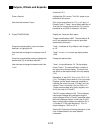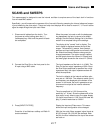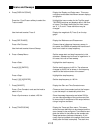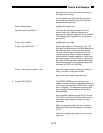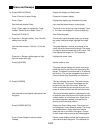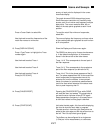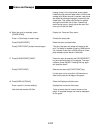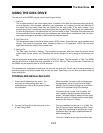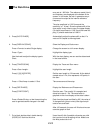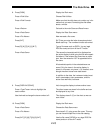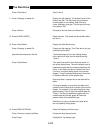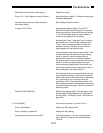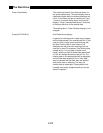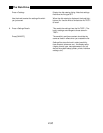
2-23
USING THE DISK DRIVE
The disk drive on the SR850 may be used to store 3 types of files.
1. Data File
This includes the data in the active display trace. In addition to the data, the instrument state (sensitivity,
input configuration, time constant, reference, scan parameters, aux outputs) and the trace definition of
the stored trace are saved. Data files are recalled into the trace buffer of the active display. If the
present trace buffer is configured to hold less points than the stored trace, then points are recalled start-
ing with the oldest point in the stored trace until the trace buffer is filled. The stored instrument state and
the trace definition of the recalled trace are recalled as well. When data is recalled from disk, the instru-
ment state is changed to the state in effect when the data was stored!
2. ASCII Data File
This file saves the data in the active display trace in ASCII format. These files may not be recalled to the
display. This format is convenient when transferring data to a PC application. ASCII files are much
larger than the binary data file for the same trace.
3. Settings File
This files stores the lock-in settings. This includes the instrument state (see Data file) as well as the
system setup (printer, plotter, etc.) Recalling this file will change the lock-in setup to that stored in the
file.
The disk drive uses double-sided, double density (DS/DD) 3.5" disks. The disk capacity is 720k. The SR850
uses the DOS format. A disk which was formatted on a PC or PS2 (for 720k) may be used. Files written by
the SR850 may be copied or read on a DOS computer.
This measurement is designed to familiarize the user with the disk drive. We will use the internal oscillator to
provide a signal so that there is some data to save and recall. Specifically, you will save and recall a data file
and a settings file.
STORING AND RECALLING DATA
The Disk Drive
1. Disconnect all cables from the lock-in. Turn
the power on while holding down the [←]
(backspace) key. Wait until the power-on tests
are completed.
2. Connect the Sine Out on the front panel to the
A input using a BNC.
When the power is turned on with the backspace
key depressed, the lock-in returns to its default
settings. See the Default Settings list in the Menu
section for a complete listing of the settings.
The display is the "normal" lock-in display. The
lock-in setup is displayed across the top of the
screen. The upper numeric readout and bar graph
shows the value of X (Rcosθ) and the lower graph
shows the the value of Y (Rsinθ).
The input impedance of the lock-in is 10 MΩ. The
Sine Out has an output impedance of 50Ω. Since
the Sine Output amplitude is specified into a high
impedance load, the output impedance does not
affect the amplitude.
The lock-in defaults to the internal oscillator refer-




